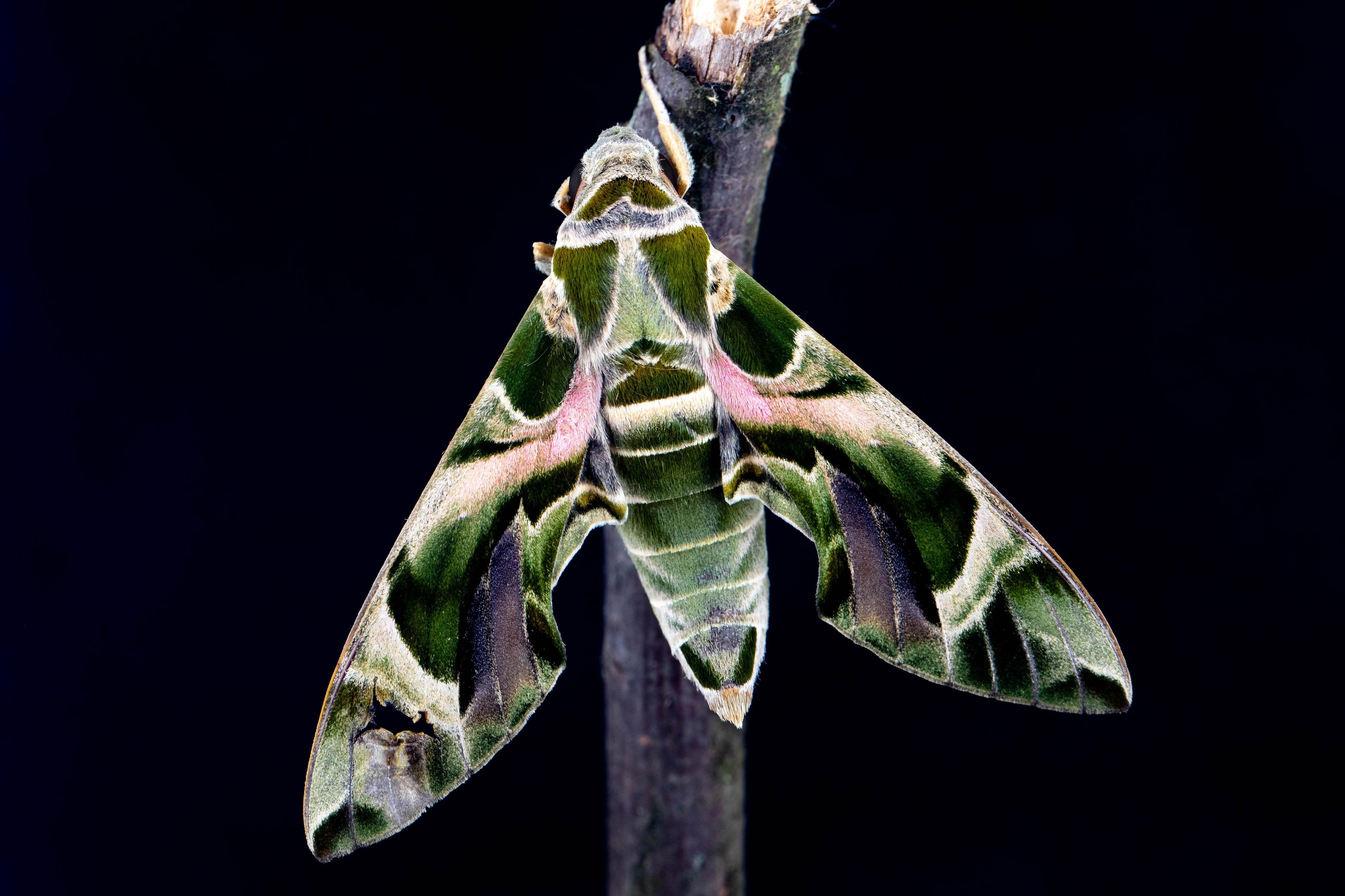Are bugs attracted to light? This is a question that has puzzled humans for centuries. At WHY.EDU.VN, we delve into the science behind this phenomenon, offering a comprehensive explanation. Discover the surprising reason why insects are drawn to artificial light sources and learn how this knowledge can help you understand and manage insect behavior with light traps. Delve deeper into insect behavior and the science of light attraction to understand the dorsal light response.
1. The Age-Old Question: Why Are Bugs Drawn to Light Sources?
For as long as humans have gathered around fires or under the glow of artificial lights, the presence of insects circling these sources has been a common sight. This behavior has sparked curiosity and led to numerous theories attempting to explain why insects are so irresistibly drawn to light. From mistaking artificial lights for the moon to seeking warmth, these explanations have varied in their plausibility. However, recent research has shed new light on this phenomenon, revealing a more complex and nuanced understanding of insect behavior around artificial light.
1.1. Debunking the Moon Navigation Myth
The most widely accepted theory has long been that insects confuse artificial lights with the moon or other celestial bodies, which they use for navigation. This idea suggests that insects rely on the consistent angle of moonlight to maintain a straight flight path. However, artificial lights, being much closer and brighter, disrupt this navigation, causing insects to spiral towards the light source.
However, groundbreaking research published in Nature Communications challenges this long-held belief. The study suggests that the attraction isn’t due to a mistaken navigation system but rather a disorientation caused by the way insects perceive and react to light in relation to their sense of orientation. This new perspective provides a more accurate and comprehensive explanation for the seemingly inexplicable behavior of insects around lights.
1.2. Exploring Alternative Theories
Before the “dorsal light response” theory gained prominence, several other hypotheses attempted to explain why bugs are attracted to light. These included:
- Positive Phototaxis: The idea that insects are simply drawn to the brightest spot in their field of vision, mistaking it for the open sky.
- Heat Attraction: The suggestion that insects are seeking warmth from the heat emitted by artificial lights.
- Glare Confusion: The possibility that insects are blinded or disoriented by the glare of artificial light.
While these theories may hold some merit in certain situations, they fail to fully explain the consistent and widespread attraction of insects to light, especially when considering the diverse range of insect species and lighting conditions.
2. The Dorsal Light Response: A New Understanding
The groundbreaking research led by Samuel Fabian and Yash Sondhi has introduced a new perspective on insect attraction to light, focusing on the “dorsal light response.” This response is a fundamental mechanism that insects use to orient themselves in space.
2.1. What is the Dorsal Light Response?
The dorsal light response is an innate behavior in insects that helps them maintain their orientation by keeping light on their back (dorsal side). This mechanism is crucial for maintaining a stable flight path and distinguishing up from down. In natural conditions, the primary source of light comes from above, allowing insects to align themselves with the horizon.
2.2. How Artificial Light Disrupts the Dorsal Light Response
Artificial light sources, particularly point sources like streetlights or porch lights, disrupt the dorsal light response. When an insect encounters such a light source, it instinctively tries to orient itself with the light on its back. However, because the light is coming from the side or below, the insect ends up tilting and circling the light in a confused attempt to maintain its orientation.
This disorientation leads to the erratic flight patterns observed around artificial lights, as insects struggle to reconcile the conflicting signals from their visual system and other sensory inputs.
2.3. The Implications of Disrupted Orientation
The disruption of the dorsal light response has significant consequences for insects. It can lead to:
- Exhaustion: The constant circling and disorientation can exhaust insects, making them more vulnerable to predators or other environmental hazards.
- Dehydration: Insects may become dehydrated due to prolonged exposure to the heat emitted by some light sources.
- Death: In extreme cases, insects may die from exhaustion or by colliding with the light source itself.
- Reduced Reproduction: The energy spent circling lights can reduce the energy available for reproduction.
- Ecological Imbalance: The disruption of insect populations can have cascading effects on the ecosystem, affecting pollination, decomposition, and other vital processes.
 Moth at Light
Moth at Light
This Oleander Hawkmoth, Daphnis nerii, showcases erratic flight patterns around lights, a direct result of the dorsal light response.
3. Research and Findings: Delving Deeper into the Science
The research that uncovered the role of the dorsal light response in insect attraction to light involved sophisticated experiments and observations, providing compelling evidence for this new understanding.
3.1. Experimental Setup and Methodology
The researchers conducted experiments in both controlled laboratory settings and natural field environments.
- Laboratory Experiments: They used high-speed infrared cameras and motion-capture technology to track the three-dimensional flight trajectories of various insect species in the presence of artificial light sources. This allowed them to precisely analyze how insects move and orient themselves in relation to light.
- Field Experiments: In the Costa Rican jungle, researchers lugged heavy cameras, lights, and tripods to field sites to gather behavioral data from insects in the wild. This provided valuable insights into how insects behave in their natural environment.
- Diverse Insect Species: The study included a wide range of insect species, from moths and dragonflies to fruit flies and honeybees, to ensure that the findings were applicable across different taxonomic groups.
3.2. Key Observations and Results
The experiments revealed several key observations:
- Insects were not directly flying towards the light but rather circling it as they tilted in an attempt to orient their backs toward it.
- Insects flew normally when the light was diffuse and came from overhead, supporting the idea that it’s an orientation issue rather than a light attraction issue.
- The dorsal light response was consistently observed across different insect species, suggesting that it is a fundamental mechanism driving their behavior around artificial lights.
3.3. Exceptions to the Rule
Interestingly, the study also identified some exceptions to the rule. Oleander hawk moths and Drosophila fruit flies flew normally in the presence of light, suggesting that certain species may have evolved mechanisms to suppress or modify their orientation behavior. Further research is needed to understand the reasons behind these exceptions.
4. Implications for Conservation and Pest Management
Understanding why bugs are attracted to light has important implications for both conservation efforts and pest management strategies.
4.1. Mitigating the Impact of Light Pollution
Light pollution is a growing environmental problem that affects not only insects but also other wildlife, including birds, mammals, and even plants. By understanding how artificial light disrupts insect behavior, we can take steps to mitigate its impact.
- Use shielded lights: Shielded lights direct light downwards, reducing the amount of light that shines into the sky and attracts insects.
- Use lower-intensity lights: Lower-intensity lights are less disruptive to insect orientation.
- Use warm-colored lights: Warm-colored lights (e.g., yellow or amber) are less attractive to insects than blue or white lights.
- Turn off lights when not needed: Turning off lights when they are not needed can significantly reduce light pollution.
4.2. Optimizing Light Traps for Pest Control
Light traps are commonly used for monitoring and controlling insect populations. By understanding the dorsal light response, we can optimize the design and placement of light traps to make them more effective.
- Placement: Placing light traps away from other light sources can increase their effectiveness.
- Light Color: Using light colors that are particularly attractive to the target insect species can improve trap capture rates.
- Trap Design: Designing traps that minimize the escape of captured insects can enhance their effectiveness.
By applying these principles, we can develop more sustainable and environmentally friendly pest management strategies.
5. Further Research and Unanswered Questions
While the dorsal light response theory provides a compelling explanation for insect attraction to light, there are still many unanswered questions and avenues for further research.
5.1. Investigating Species-Specific Differences
Future studies should investigate how universal this particular type of flight response is among insect species. Understanding the species-specific differences in light attraction behavior can help us develop more targeted conservation and pest management strategies.
5.2. Exploring the Role of Other Sensory Cues
Insects use a variety of sensory cues to navigate and orient themselves in their environment, including vision, olfaction, and mechanoreception. Further research is needed to understand how these different cues interact and influence insect behavior around artificial lights.
5.3. Assessing the Long-Term Ecological Consequences
The long-term ecological consequences of light pollution on insect populations and ecosystems are still not fully understood. More research is needed to assess the impact of light pollution on insect biodiversity, ecosystem function, and human well-being.
Insects circling a light source, a common sight illustrating the impact of artificial light on insect behavior.
6. Addressing Common Misconceptions
There are many common misconceptions about why bugs are attracted to light. Let’s address some of the most prevalent ones:
6.1. “Insects are Attracted to Heat”
While some insects may be attracted to heat, this is not the primary reason why they are drawn to light. The dorsal light response explains the behavior more comprehensively.
6.2. “Insects are Simply Confused”
While confusion plays a role, it is not simply a matter of insects being disoriented. The disruption of their innate orientation mechanism is the underlying cause.
6.3. “All Insects are Attracted to Light”
Not all insects are equally attracted to light. Some species are more attracted than others, and some may even be repelled by certain types of light.
6.4. “Turning Off Lights Solves the Problem Completely”
While turning off lights can help reduce light pollution, it is not a complete solution. Other measures, such as using shielded lights and warm-colored lights, are also necessary.
7. Practical Tips for Reducing Insect Attraction to Light
Now that you understand why bugs are attracted to light, here are some practical tips for reducing their attraction:
7.1. Switch to Yellow or Amber Lights
Yellow or amber lights emit less blue light, which is more attractive to insects.
7.2. Use Shielded Fixtures
Shielded fixtures direct light downwards, preventing it from shining into the sky and attracting insects.
7.3. Dim or Turn Off Lights When Possible
Reducing the intensity of lights or turning them off when they are not needed can significantly reduce insect attraction.
7.4. Close Curtains and Blinds
Closing curtains and blinds can prevent light from escaping your home and attracting insects.
7.5. Use Motion-Sensor Lights
Motion-sensor lights only turn on when needed, reducing the amount of time that insects are exposed to artificial light.
8. Expert Opinions and Insights
To further enhance your understanding, let’s consider the opinions and insights of experts in the field.
8.1. Quotes from Researchers
“What we’re bringing here is just linking this behavior to an insect behavior that was considered a puzzle until now,” says Samuel Fabian, co-lead author of the study and a postdoctoral researcher in entomology at Imperial College London.
“That very concretely showed that it’s not a light attraction issue but an orientation issue,” says co-lead author Yash Sondhi, a postdoctoral fellow at the McGuire Center for Lepidoptera and Biodiversity at the Florida Museum of Natural History.
8.2. Perspectives from Ecologists
“I was very happy when I read this paper, as it gave for the first time a satisfying answer to a long-standing phenomenon,” says Florian Altermatt, an ecologist at the University of Zurich, who was not involved in the research.
8.3. Insights from Entomologists
“It’s exciting to have a new observation on a phenomenon that humans have likely been observing and wondering about for millennia,” says Avalon Owens, an entomologist at Harvard University, who also did not participate in the research.
9. The Role of WHY.EDU.VN in Answering Your Questions
At WHY.EDU.VN, we are dedicated to providing accurate, reliable, and up-to-date information on a wide range of topics, including science, nature, and technology. We strive to answer your questions in a clear, concise, and engaging manner, drawing on the expertise of leading researchers and experts in their fields.
9.1. Our Commitment to Accuracy and Reliability
We adhere to the highest standards of journalistic integrity, ensuring that all of our content is thoroughly researched, fact-checked, and reviewed by experts. We cite our sources and provide links to original research papers and other authoritative resources.
9.2. Our Mission to Educate and Inform
Our mission is to educate and inform our readers, empowering them to make informed decisions about their lives and the world around them. We believe that knowledge is power, and we are committed to making that power accessible to everyone.
9.3. How to Find More Answers on WHY.EDU.VN
If you have more questions about why bugs are attracted to light or any other topic, we encourage you to visit our website at WHY.EDU.VN. You can search our extensive library of articles, browse our topic categories, or submit your own questions to our team of experts. We are here to help you find the answers you need.
10. Conclusion: Embracing a Brighter, Bug-Friendlier Future
Understanding why bugs are attracted to light is not just an academic exercise; it is a crucial step towards creating a more sustainable and bug-friendly future. By implementing simple measures to reduce light pollution, we can help protect insect populations, preserve biodiversity, and enhance the quality of our environment.
Remember, every small action counts. By switching to shielded lights, using warm-colored bulbs, and turning off lights when not needed, you can make a difference in the lives of insects and contribute to a brighter, more balanced world.
Ready to Explore More?
Do you have more questions about the natural world? Are you curious about other scientific phenomena? Don’t hesitate to explore the wealth of knowledge available at WHY.EDU.VN. Our team of experts is ready to provide you with the answers you seek.
Have a burning question? Visit WHY.EDU.VN today and submit your query. Our dedicated professionals are committed to delivering accurate, reliable, and insightful responses to satisfy your curiosity.
Contact Us:
- Address: 101 Curiosity Lane, Answer Town, CA 90210, United States
- WhatsApp: +1 (213) 555-0101
- Website: WHY.EDU.VN
Explore, learn, and discover with WHY.EDU.VN – where curiosity meets knowledge!
Frequently Asked Questions (FAQ)
Q1: Why are moths so attracted to light?
Moths are highly attracted to light due to the dorsal light response, which causes them to become disoriented and circle artificial light sources.
Q2: Do all insects exhibit the same attraction to light?
No, different insect species exhibit varying degrees of attraction to light. Some species, like moths, are highly attracted, while others may be less so or even repelled.
Q3: What is the dorsal light response?
The dorsal light response is an innate behavior in insects that helps them maintain their orientation by keeping light on their back (dorsal side).
Q4: How does artificial light disrupt the dorsal light response?
Artificial light sources, particularly point sources, disrupt the dorsal light response by causing insects to tilt and circle the light in a confused attempt to maintain their orientation.
Q5: What are the consequences of disrupting the dorsal light response?
The disruption of the dorsal light response can lead to exhaustion, dehydration, death, reduced reproduction, and ecological imbalance in insects.
Q6: What can I do to reduce insect attraction to light around my home?
You can reduce insect attraction to light by switching to yellow or amber lights, using shielded fixtures, dimming or turning off lights when possible, closing curtains and blinds, and using motion-sensor lights.
Q7: Are light traps an effective way to control insect populations?
Light traps can be effective for monitoring and controlling insect populations, especially when designed and placed strategically to maximize capture rates.
Q8: How does light pollution affect insect populations?
Light pollution can have significant negative impacts on insect populations by disrupting their behavior, reducing their reproduction, and altering their ecological roles.
Q9: What is the difference between positive phototaxis and the dorsal light response?
Positive phototaxis is the general attraction to light, while the dorsal light response is a specific mechanism that explains how insects use light to orient themselves.
Q10: Where can I find more information about insect behavior and light pollution?
You can find more information about insect behavior and light pollution on websites like why.edu.vn, scientific journals, and environmental organizations.

